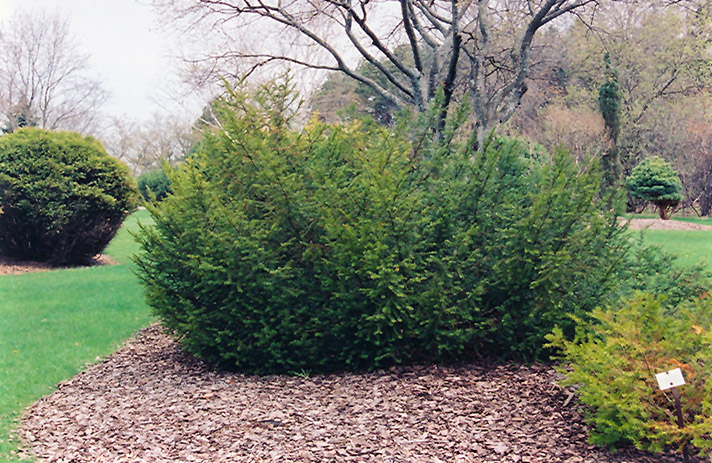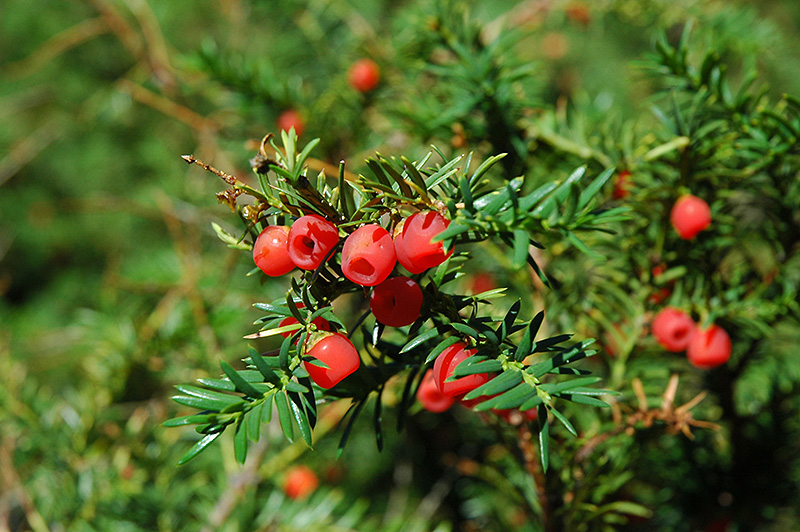Find Plants
Height: 4 feet
Spread: 7 feet
Sunlight:
![]()
![]()
![]()
Hardiness Zone: 2
Other Names: American Yew
Description:
An uncommon native evergreen shrub with a bushy and sprawling habit of growth, dark green foliage tends to turn reddish-brown in winter; very hardy but requires winter shade and reliable snow cover, makes a good large groundcover for shady parts
Ornamental Features
Canadian Yew is a dwarf conifer which is primarily valued in the landscape or garden for its broadly spreading habit of growth. It has dark green evergreen foliage which emerges light green in spring. The ferny sprays of foliage turn brown in the fall, which persists throughout the winter.
Landscape Attributes
Canadian Yew is an open multi-stemmed evergreen shrub with a ground-hugging habit of growth. Its relatively fine texture sets it apart from other landscape plants with less refined foliage.
This is a high maintenance shrub that will require regular care and upkeep, and can be pruned at anytime. Gardeners should be aware of the following characteristic(s) that may warrant special consideration;
- Suckering
Canadian Yew is recommended for the following landscape applications;
- Mass Planting
- General Garden Use
- Naturalizing And Woodland Gardens
Planting & Growing
Canadian Yew will grow to be about 4 feet tall at maturity, with a spread of 7 feet. It tends to fill out right to the ground and therefore doesn't necessarily require facer plants in front. It grows at a slow rate, and under ideal conditions can be expected to live for 60 years or more.
This shrub performs well in both full sun and full shade. However, you may want to keep it away from hot, dry locations that receive direct afternoon sun or which get reflected sunlight, such as against the south side of a white wall. It does best in average to evenly moist conditions, but will not tolerate standing water. It is not particular as to soil pH, but grows best in sandy soils. It is somewhat tolerant of urban pollution, and will benefit from being planted in a relatively sheltered location. Consider applying a thick mulch around the root zone in winter to protect it in exposed locations or colder microclimates. This species is native to parts of North America, and parts of it are known to be toxic to humans and animals, so care should be exercised in planting it around children and pets.
Disclaimer - This Plant Finder tool is an online resource representing many of the varieties that we carry over the course of the season, and is intended for informational purposes only. Inventory varies seasonally, so we cannot guarantee that every plant will be in stock at all times - please contact the store directly for availability. It does not include our entire inventory of plants, so be sure to visit our store to see varieties that may not be represented on this list.


